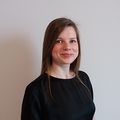The Spatial Organisation of the Cell
The complexity of living organisms does not scale with the predicted number of protein coding genes. Many factors contribute to increasing complexity, including non-coding RNA mediated control mechanisms, post-transcriptional and post-translation processing. The location of protein synthesis also plays a key role in expanding protein functionality, with aberrant spatial translation being a driver in multiple diseases.
Here, Anja and Kathryn will describe approaches to capture the subcellular spatial proteome on a cell-wide scale(1) (2) based on physicochemical fractionation of cellular components (LOPIT), give examples of how they have applied these methods to interrogate many different biological scenarios (3) (4) (5) and describe associated robust computational workflows (6). They will describe how a modified LOPIT workflow can also give insights into the effect of post-translational modification on protein location and relocalisation. They will also discuss how we have significantly modified these approaches in order to capture the spatial transcriptome (LoRNA– localization of RNA) and show the impact of the unfolded protein response on RNA location.
They will also briefly mention a recently published method designed to capture in vivo structures of proteins (7) and methods to capture low abundance membrane receptors.
- Mulvey et al (2017) Nature Protocols - doi: 10.1038/nprot.2017.026
- Geladaki et al (2019) Nature Commun. - doi:10.1038/s41467-018-08191-w
- Barylyuk et al (2020) Cell Host & Microbe - doi: 10.1016/j.chom.2020.09.011
- Shin et al (2020) Nature Commun. - doi: 10.1038/s41467-020-19840-4
- Mulvey (2021) in revision
- Crook et al (2021) in revision and bioRxiv 2021.01.04.425239
- Minde et al (2020) Commun. Biol. doi: 10.1038/s42003-020-0758-y.




